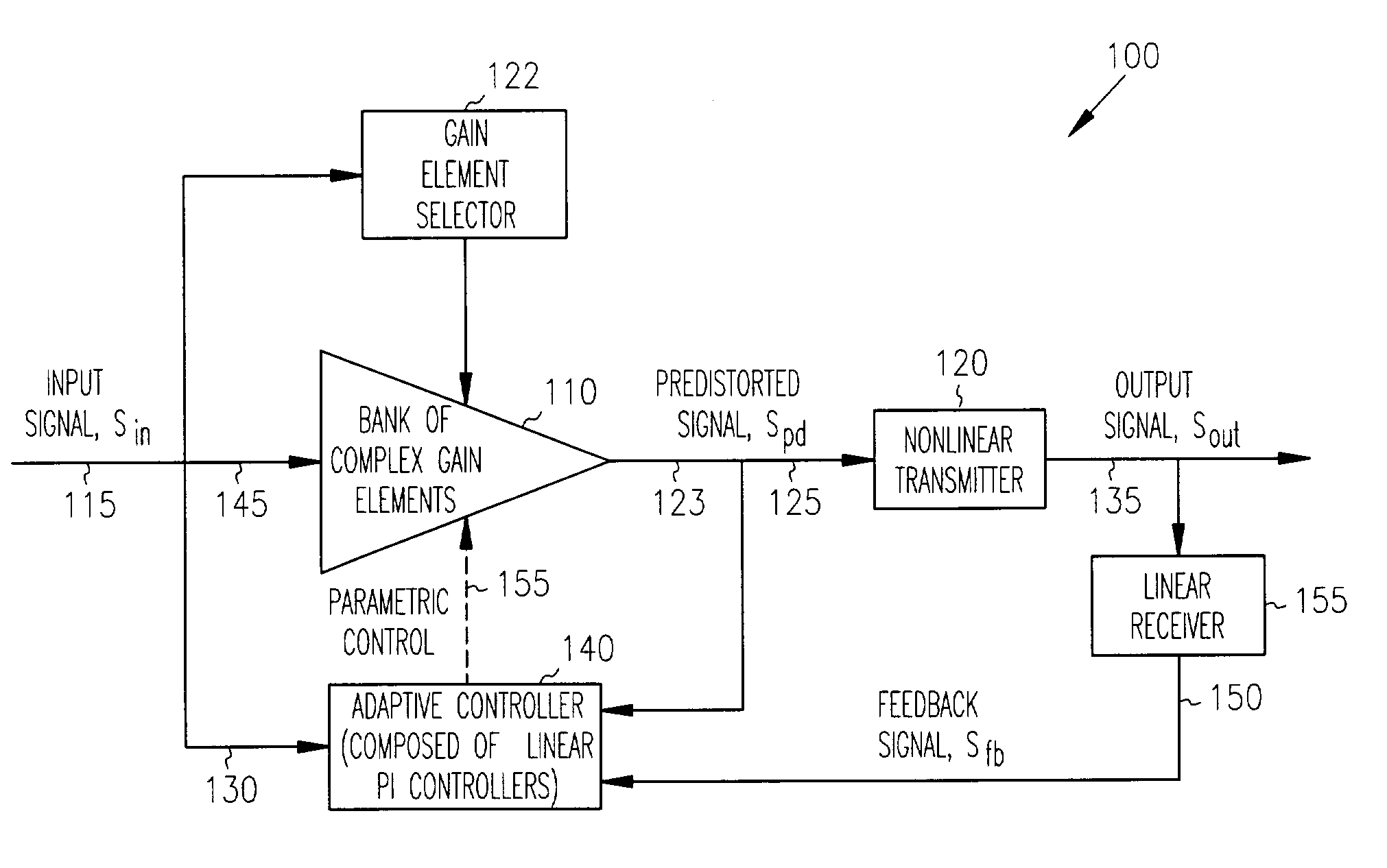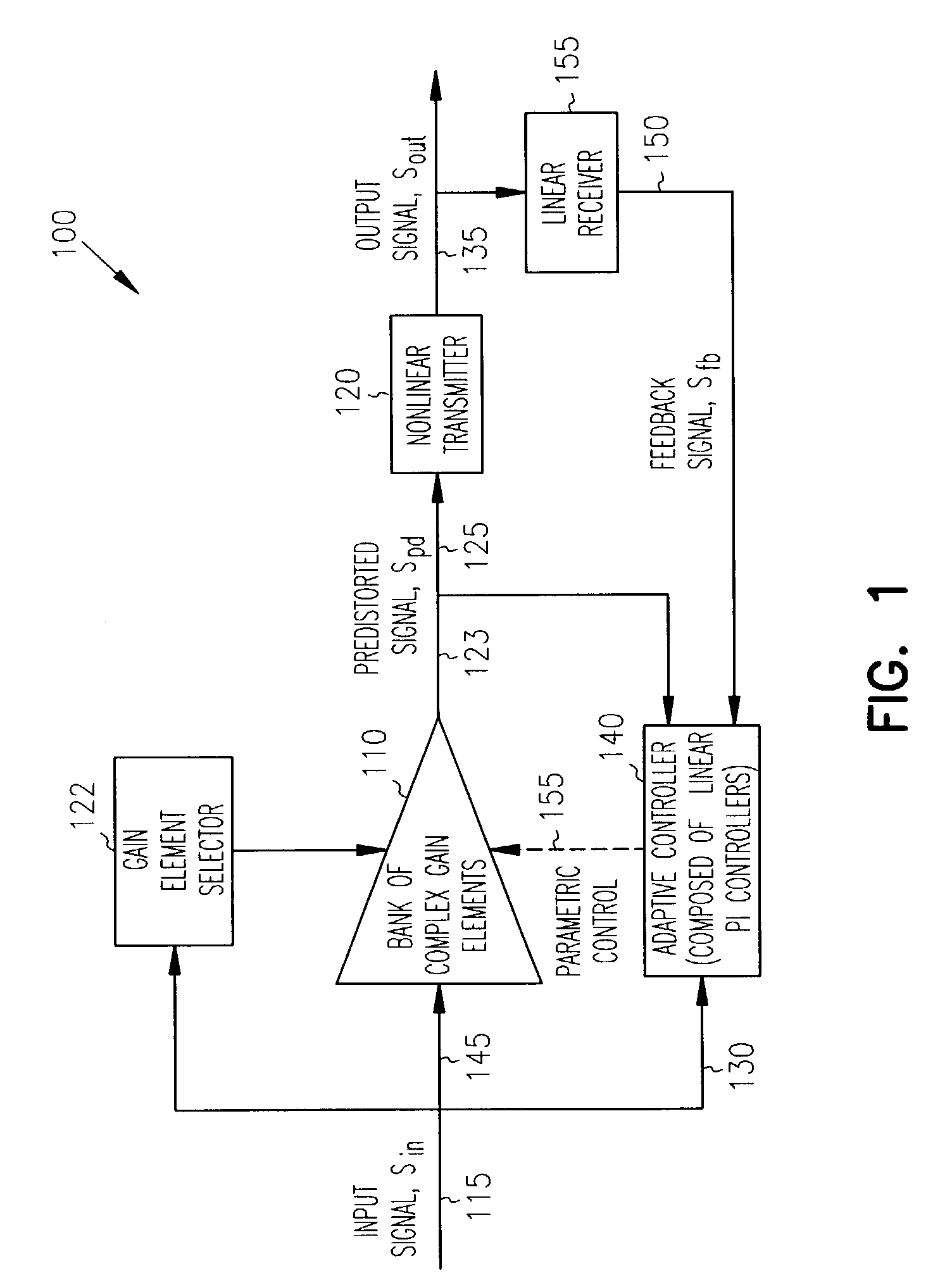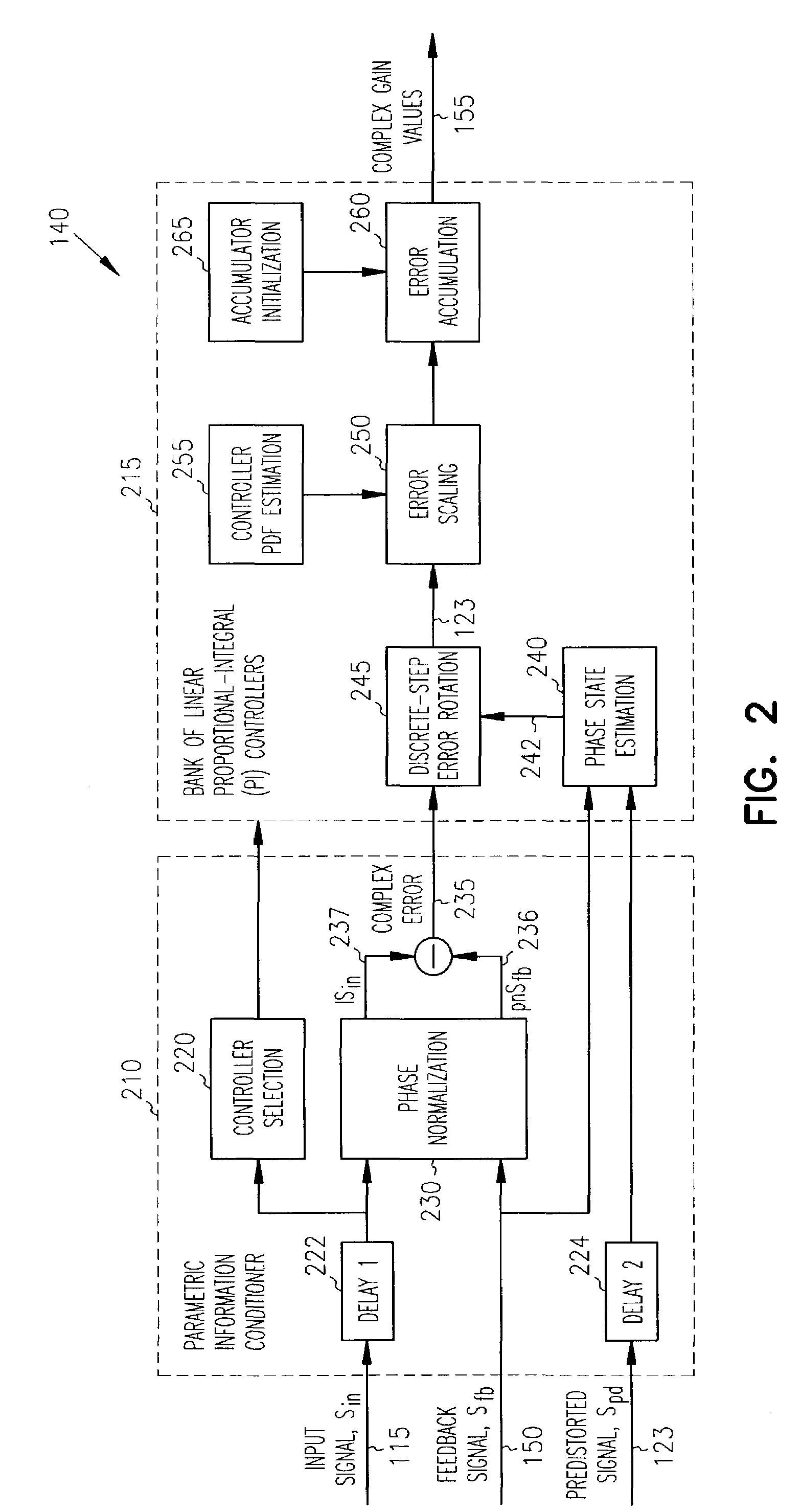Adaptive controller for linearization of transmitter
a linearization controller and transmitter technology, applied in the field of transmitters, can solve the problems of large hardware resources needed for the implementation of precision trigonometric/inverse trigonometric, the complexity of predistorter gain should be added to the respective algorithms, and the limited relevance of contemporary wideband communication standards, so as to reduce the susceptibility to signal changes
- Summary
- Abstract
- Description
- Claims
- Application Information
AI Technical Summary
Benefits of technology
Problems solved by technology
Method used
Image
Examples
Embodiment Construction
[0022]In the following description, reference is made to the accompanying drawings that form a part hereof, and in which is shown by way of illustration specific embodiments in which the invention may be practiced. These embodiments are described in sufficient detail to enable those skilled in the art to practice the invention, and it is to be understood that other embodiments may be utilized and that structural, logical and electrical changes may be made without departing from the scope of the present invention. The following description is, therefore, not to be taken in a limited sense, and the scope of the present invention is defined by the appended claims.
[0023]References to signals and lines carrying such signals are made with the same reference number. While the invention is described with respect to circuitry, and blocks representing such circuitry, it is recognized that various combinations of software, hardware and firmware may be used provided adequate processing speed is...
PUM
 Login to View More
Login to View More Abstract
Description
Claims
Application Information
 Login to View More
Login to View More - R&D
- Intellectual Property
- Life Sciences
- Materials
- Tech Scout
- Unparalleled Data Quality
- Higher Quality Content
- 60% Fewer Hallucinations
Browse by: Latest US Patents, China's latest patents, Technical Efficacy Thesaurus, Application Domain, Technology Topic, Popular Technical Reports.
© 2025 PatSnap. All rights reserved.Legal|Privacy policy|Modern Slavery Act Transparency Statement|Sitemap|About US| Contact US: help@patsnap.com



